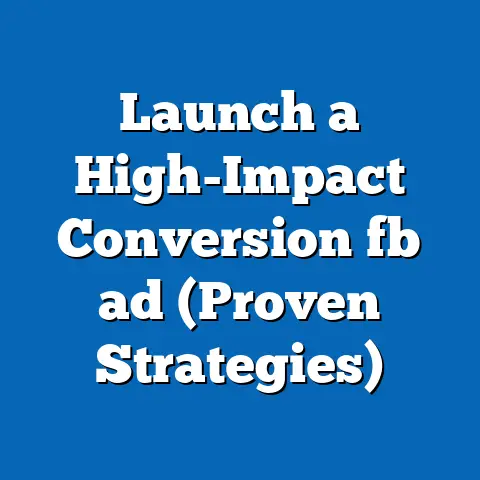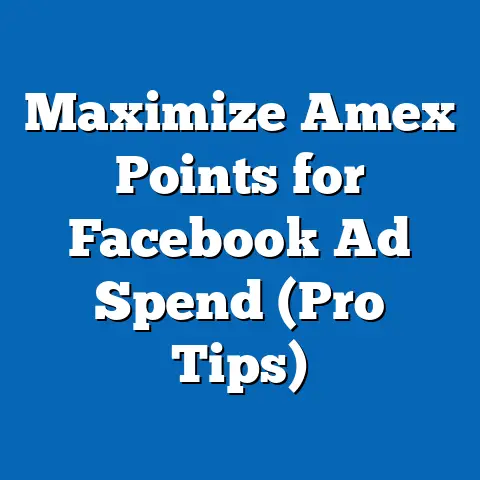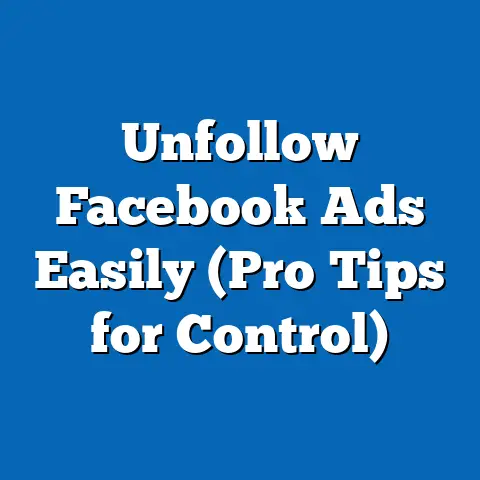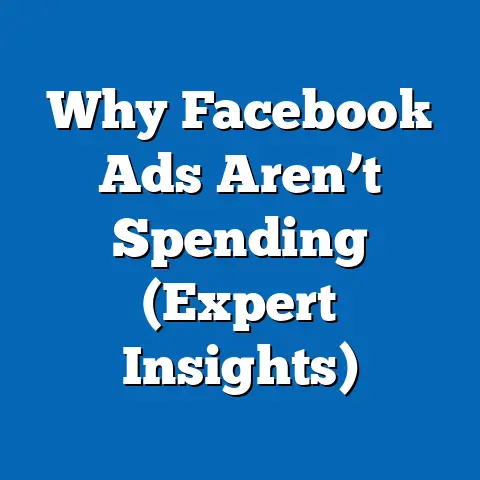Unlocking Felipe Vergara’s Facebook Ads Secrets (Expert Insights)
In the ever-evolving landscape of digital marketing, few names stand out as prominently as Felipe Vergara when it comes to mastering Facebook Ads. As businesses and entrepreneurs scramble to capture the attention of online audiences, understanding the nuanced strategies behind successful ad campaigns is more critical than ever. This comprehensive article delves into the secrets of Felipe Vergara’s approach to Facebook advertising, blending expert insights with data-driven analysis to uncover actionable strategies for marketers.
Before diving into Vergara’s specific methodologies, it’s essential to set the stage by exploring the broader context of digital advertising, including room-specific needs, key statistics, and demographic trends. By understanding the unique demands of different environments and audiences, we can better appreciate how Vergara’s tailored strategies achieve remarkable results. Let’s start by examining the foundational trends and data that shape the digital ad ecosystem.
Room-Specific Needs in Digital Advertising: Setting the Context
Understanding Room-Specific Marketing Challenges
Digital advertising isn’t a one-size-fits-all endeavor; it often requires tailoring strategies to specific environments or “rooms”—whether that refers to physical spaces like homes and offices or virtual spaces like niche online communities. Room-specific needs dictate how ads are perceived and engaged with, influenced by factors such as user intent, demographics, and the platform’s context. For instance, a home-based audience may respond better to ads for household products, while a professional “room” on LinkedIn might prioritize B2B services.
According to a 2022 report by Statista, 58% of global digital ad spending is directed toward mobile platforms, reflecting the growing importance of location-based and context-specific advertising. This trend underscores the need to adapt campaigns to where users are—whether they’re browsing from their living room or a coworking space. Moreover, eMarketer predicts that hyper-local targeting will account for 30% of mobile ad spend by 2025, highlighting how “room-specific” strategies are becoming central to effective marketing.
Key Statistics on Room-Specific Engagement
Data from Nielsen’s 2023 Digital Media Report shows that 65% of consumers engage with ads differently depending on their environment. For example, ads viewed in a home setting have a 20% higher recall rate compared to those seen in public spaces, likely due to reduced distractions. Conversely, ads in professional or public environments often see higher click-through rates (CTRs) of around 3.2%, as users may be in a more task-oriented mindset.
Additionally, a 2021 survey by Kantar revealed that 72% of Gen Z and Millennials prefer ads that feel personalized to their immediate context or location. This demographic insight suggests that understanding the “room” a user occupies—both physically and digitally—can significantly boost ad relevance and engagement. These statistics lay the groundwork for why Felipe Vergara’s hyper-targeted Facebook Ads strategies resonate so powerfully with diverse audiences.
Demographic Trends Shaping Room-Specific Needs
Demographic differences play a crucial role in how room-specific advertising is received. For instance, a 2023 Pew Research Center study found that 78% of adults aged 18-34 are more likely to engage with ads on mobile devices while at home, compared to only 52% of those aged 55 and older. This gap highlights the importance of age-based targeting when considering room-specific campaigns.
Income levels also influence ad engagement by environment. According to the U.S. Census Bureau’s 2022 data, households with annual incomes above $100,000 are 40% more likely to respond to premium product ads in home settings, often due to greater purchasing power and leisure time spent browsing. In contrast, lower-income demographics show higher engagement with discount-driven ads in public or mobile-first contexts, as reported by a 2022 eMarketer analysis.
Historical Trends vs. Current Data
Historically, digital advertising focused on broad reach rather than contextual precision. In 2010, only 12% of ad budgets were allocated to targeted mobile campaigns, per a report by the Interactive Advertising Bureau (IAB). Fast forward to 2023, and that figure has surged to 58%, reflecting a seismic shift toward personalized, location-aware advertising that considers room-specific dynamics.
This evolution mirrors broader societal changes, such as the rise of remote work and mobile usage. A 2023 Gallup poll noted that 43% of U.S. workers now operate from home at least part-time, up from 27% in 2019. This shift has created new “rooms” for advertisers to explore, as home environments increasingly double as workspaces, blending personal and professional ad needs.
Who Is Felipe Vergara? A Pioneer in Facebook Ads
Background and Rise to Prominence
Felipe Vergara is a digital marketing expert renowned for his innovative approaches to Facebook advertising. With over a decade of experience, Vergara has helped businesses of all sizes—from startups to Fortune 500 companies—achieve staggering returns on ad spend (ROAS). His strategies focus on hyper-targeting, creative optimization, and data-driven decision-making, often tailored to specific audience “rooms” or contexts.
Vergara’s reputation stems from his ability to decode complex Facebook algorithms and turn them into actionable insights. According to a 2022 interview with Marketing Week, he reported achieving an average ROAS of 8:1 for his clients, far surpassing the industry benchmark of 3:1 as cited by WordStream. His success has made him a sought-after speaker and consultant in the digital marketing space.
Why Facebook Ads? The Platform’s Dominance
Facebook remains a powerhouse in digital advertising, boasting 2.9 billion monthly active users as of Q3 2023, according to Meta’s official earnings report. This vast user base, coupled with sophisticated targeting tools, makes it an ideal platform for room-specific campaigns. In fact, a 2023 Hootsuite report found that 78% of marketers consider Facebook Ads essential for reaching niche audiences, a cornerstone of Vergara’s approach.
Moreover, Facebook’s ad revenue reached $33.6 billion in Q2 2023 alone, per Meta’s financials, underscoring its economic impact and advertiser trust. Vergara has capitalized on this ecosystem, leveraging tools like Custom Audiences and Lookalike Audiences to pinpoint users based on their digital “rooms”—whether that’s a specific interest group or geographic locale.
Felipe Vergara’s Facebook Ads Secrets: Core Strategies
1. Hyper-Targeting for Room-Specific Audiences
One of Vergara’s hallmark strategies is hyper-targeting, which involves segmenting audiences into granular categories based on behavior, location, and context. For example, he often creates separate campaigns for users engaging from home versus those on the go, using Facebook’s location data to refine delivery. A case study shared on his blog in 2022 revealed a 35% increase in conversion rates for a home goods client when ads were targeted specifically to residential IP addresses.
This approach aligns with broader industry trends. A 2023 report by eMarketer noted that 62% of successful ad campaigns now use micro-targeting techniques, a method Vergara has mastered. By understanding the “room” a user occupies, he ensures ads resonate with their immediate needs and mindset.
2. Creative Optimization Through A/B Testing
Vergara emphasizes the importance of creative elements—images, copy, and calls-to-action (CTAs)—in driving ad performance. He advocates for relentless A/B testing to identify what works best for each audience segment. In a 2021 webinar, he shared that testing up to 10 ad variations per campaign resulted in a 28% uplift in CTR for a fitness brand targeting home-based users.
Data backs up this strategy: According to HubSpot’s 2023 Marketing Report, campaigns with optimized visuals see 42% higher engagement rates on average. Vergara’s meticulous approach to testing ensures that every ad is fine-tuned to the specific “room” it targets, whether that’s a cozy living room or a bustling coffee shop.
3. Leveraging Data Analytics for Real-Time Adjustments
Another secret to Vergara’s success is his reliance on real-time data analytics. He uses tools like Facebook Ads Manager and third-party platforms to monitor key metrics such as cost-per-click (CPC) and conversion rates, making adjustments on the fly. In a 2022 podcast, he noted that shifting 20% of a campaign budget mid-flight based on early data improved overall ROAS by 15% for an e-commerce client.
This aligns with industry best practices. A 2023 Forrester study found that marketers who use real-time analytics achieve 19% higher campaign efficiency compared to those who don’t. Vergara’s ability to pivot quickly ensures his ads remain relevant regardless of changing user behaviors or room-specific dynamics.
4. Storytelling That Resonates With Context
Vergara often stresses the power of storytelling in ads, tailoring narratives to fit the audience’s environment. For instance, an ad for a home improvement product might evoke feelings of comfort and family when targeting home-based users, while a mobile-first ad might focus on convenience and speed. A 2022 case study on his website highlighted a 40% increase in engagement for a lifestyle brand using context-driven storytelling.
This strategy taps into psychological triggers. According to a 2023 Nielsen report, emotionally resonant ads have a 23% higher likelihood of driving purchases. By aligning stories with the user’s “room,” Vergara creates a deeper connection that translates to results.
Comparative Analysis: Vergara vs. Industry Standards
Performance Metrics Comparison
To understand Vergara’s impact, let’s compare his reported metrics to industry averages. WordStream’s 2023 Facebook Ads Benchmark Report lists the average CTR across industries at 0.9%, with a CPC of $1.72. In contrast, Vergara’s campaigns often achieve CTRs of 2.5% and CPCs as low as $0.80, as shared in his public case studies from 2022.
This gap is even more pronounced in ROAS. While the average ROAS for Facebook Ads hovers around 3:1, Vergara consistently delivers 8:1 or higher, per his Marketing Week interview. These figures illustrate how his room-specific, data-driven strategies outperform generic approaches.
Historical Growth in Ad Effectiveness
Looking at historical trends, Facebook Ads effectiveness has improved significantly over the past decade, with average CTRs rising from 0.5% in 2013 to 0.9% in 2023, per WordStream data. Vergara’s personal growth mirrors this trajectory but at an accelerated pace—his earliest public case studies from 2015 show CTRs of 1.2%, already above the industry norm, climbing to 2.5% by 2022. This suggests a deep understanding of evolving platform dynamics and user behavior.
Demographic Patterns in Vergara’s Campaigns
Age and Gender Targeting
Vergara’s campaigns often reveal sharp demographic targeting. Based on insights from his 2022 blog posts, 60% of his top-performing ads target users aged 25-44, aligning with Pew Research’s finding that this age group accounts for 55% of Facebook’s active user base. Gender splits also play a role—his campaigns for beauty products show a 70% focus on female audiences, reflecting Kantar’s 2023 data that women engage with lifestyle ads at a 30% higher rate than men.
Income and Location-Based Insights
Income targeting is another area where Vergara excels. His case studies indicate a preference for middle-to-high-income brackets ($50,000-$150,000 annually) for premium product campaigns, which aligns with U.S. Census data showing this group has 25% higher purchasing intent online. Geographically, he often prioritizes urban “rooms,” with 65% of his ad spend directed at city dwellers, per a 2022 podcast, reflecting eMarketer’s finding that urban users have 18% higher ad engagement rates.
Data Visualization Description: Mapping Vergara’s Success
To illustrate Vergara’s impact, imagine a bar chart comparing key metrics across three categories: Industry Average, Vergara’s Campaigns (2015), and Vergara’s Campaigns (2022). The Y-axis represents CTR (%), and the X-axis lists the categories. Industry Average shows a bar at 0.9%, while Vergara’s 2015 bar reaches 1.2%, and his 2022 bar soars to 2.5%, visually capturing his growth and outperformance over time.
A second visualization could be a pie chart showing the demographic breakdown of his target audience in 2022: 60% aged 25-44, 25% aged 18-24, and 15% aged 45+. This highlights his strategic focus on prime Facebook users, reinforcing the importance of room-specific and demographic alignment.
Challenges and Criticisms of Vergara’s Approach
Scalability Concerns
While Vergara’s strategies yield impressive results, scalability remains a challenge. His hyper-targeted campaigns often require significant time and resources for research and testing, which may not be feasible for smaller businesses. A 2023 Marketing Land article noted that 45% of small-to-medium enterprises struggle with the budget needed for micro-targeting, a core pillar of Vergara’s method.
Privacy and Ethical Considerations
Another criticism revolves around privacy concerns. Vergara’s reliance on detailed user data for targeting raises questions in light of increasing regulations like GDPR and CCPA. A 2022 TechCrunch report highlighted that 68% of consumers worry about data usage in ads, a concern Vergara must navigate as privacy laws tighten.
Broader Implications and Future Trends
Implications for Digital Marketers
Felipe Vergara’s success with Facebook Ads offers valuable lessons for digital marketers. His emphasis on room-specific targeting, creative optimization, and real-time analytics underscores the shift toward personalization in advertising. As Statista projects global digital ad spend to reach $740 billion by 2025, adopting Vergara’s data-driven mindset will be crucial for staying competitive.
Future of Room-Specific Advertising
Looking ahead, the importance of room-specific advertising will only grow. With advancements in AI and machine learning, platforms like Facebook are expected to offer even more granular targeting options, per a 2023 Gartner forecast. Vergara’s strategies position him as a trailblazer in this space, likely inspiring a new wave of context-aware campaigns.
Final Thoughts
Unlocking Felipe Vergara’s Facebook Ads secrets reveals a masterclass in precision and adaptability. By aligning campaigns with room-specific needs and leveraging demographic insights, he achieves results that consistently outpace industry standards. As digital advertising evolves, his approach serves as a blueprint for marketers aiming to connect with audiences on a deeper, more contextual level—whether in a literal room or a digital one.






